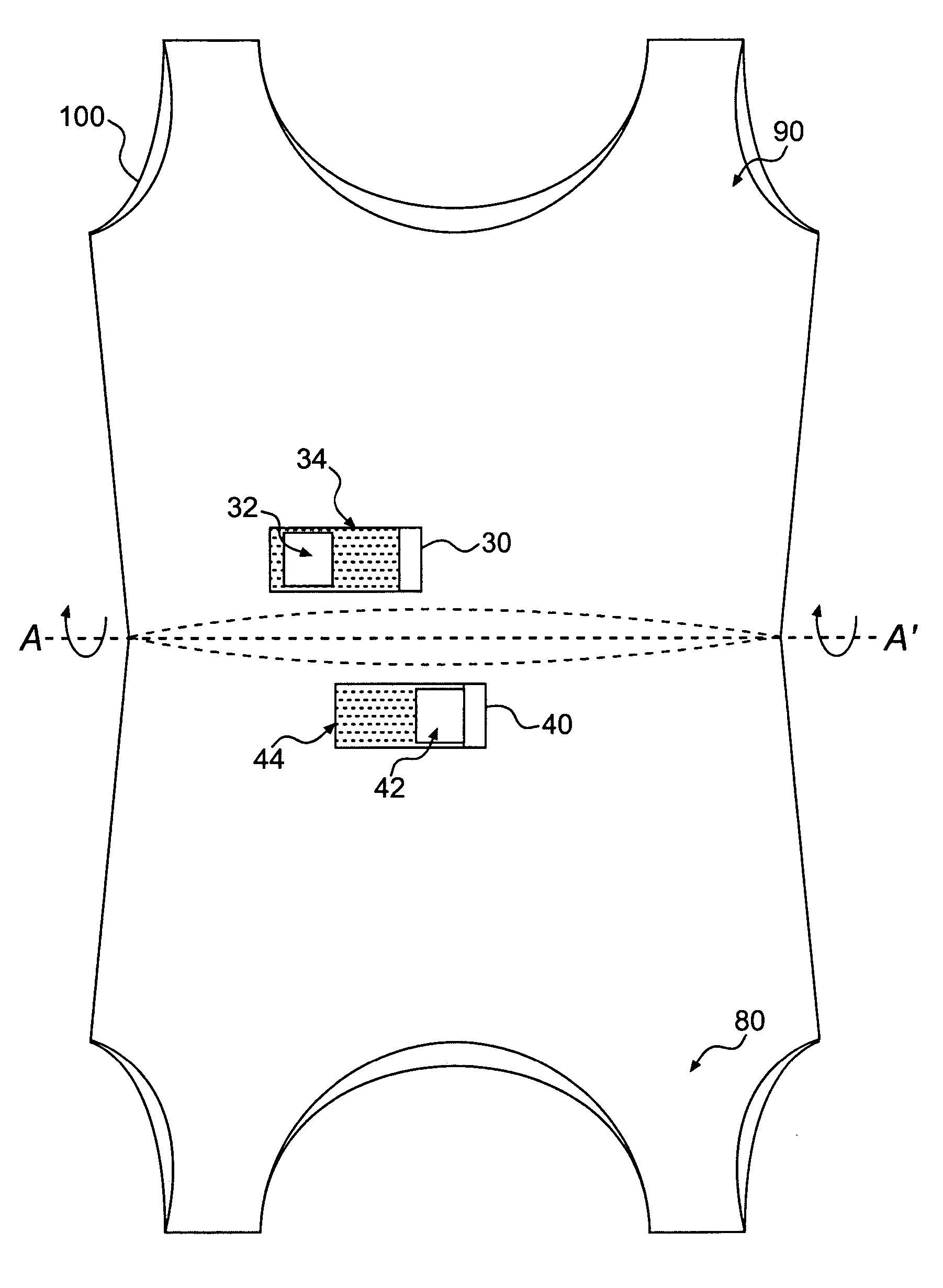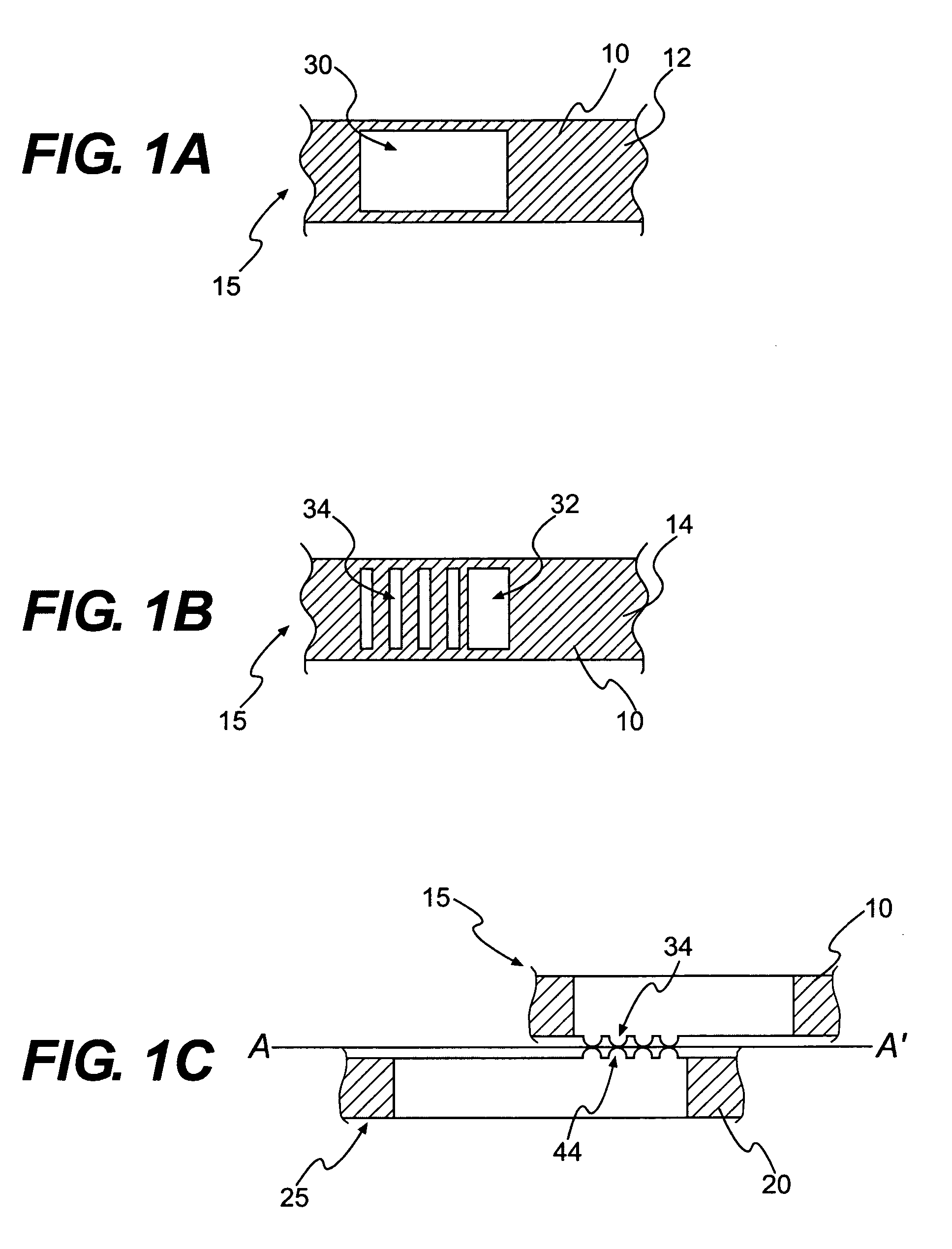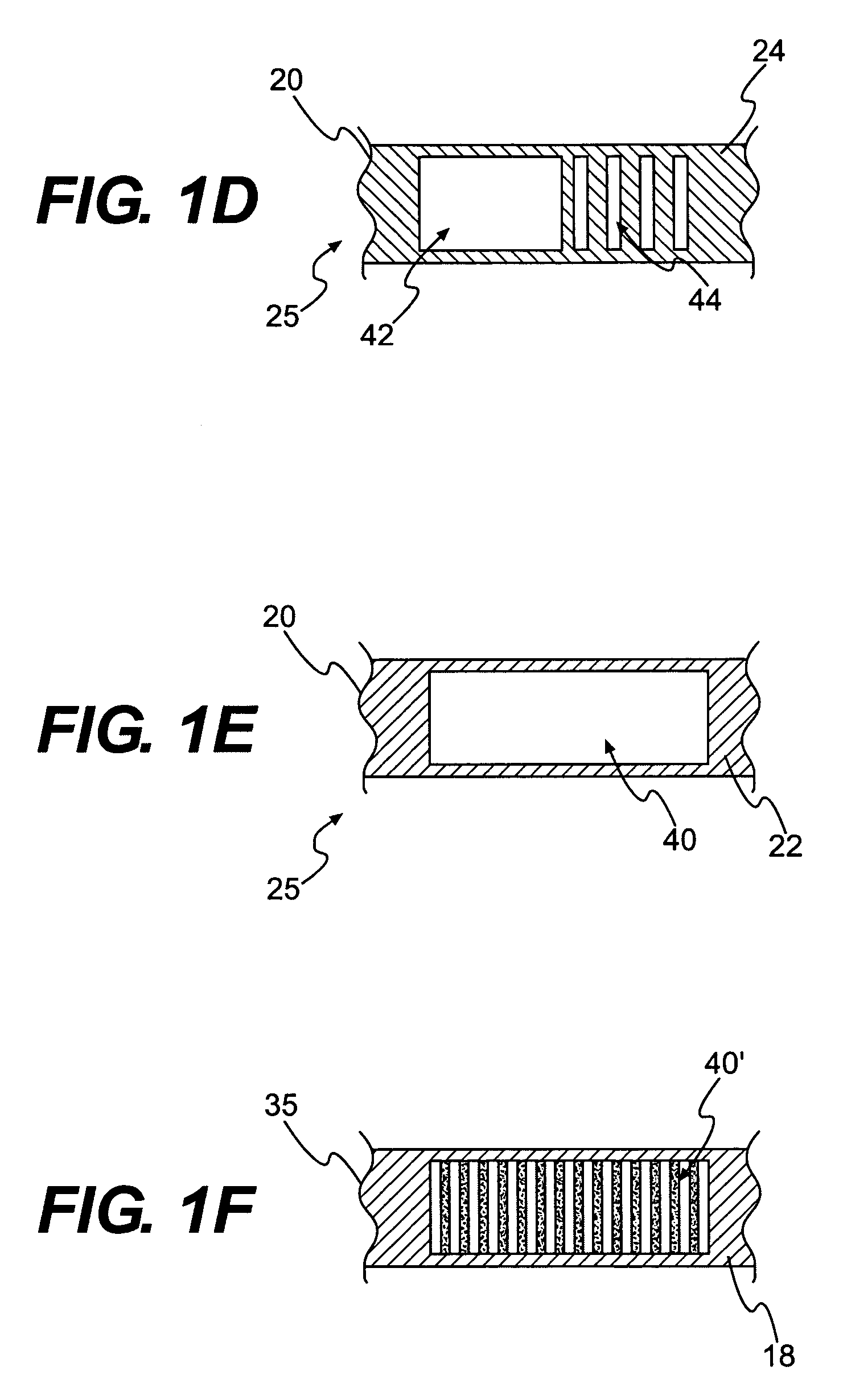Textile-based electrode
a technology of electrodes and materials, applied in the field of textile-based electrodes or electrode systems, can solve the problems of limited use, limited application, and difficulty in making metallic wires part of traditionally fabricated textiles
- Summary
- Abstract
- Description
- Claims
- Application Information
AI Technical Summary
Benefits of technology
Problems solved by technology
Method used
Image
Examples
examples
[0072] Examples of the invention were made in the form of heart rate monitoring belts (listed as 1-14 in Table 1). The heart rate monitoring belts were made by circular knitting using a SMA-8-TOP1 seamless, 13 inch body size, knitting machine from SANTONI (from GRUPPO LONATI, Italy) (hereinafter, “the SANTONI knitting machine”). In making the heart rate monitoring belts, a combination of different knitting constructions (including jersey and mock rib knit construction) using various types of yarns were used. In each example, the denoted electrode region was made using Xstatic® yarns of a silver metallized nylon yarn of 70 denier and 34 filaments from Laird Sauquoit Industries (Scranton, Pa., U.S.A. 18505) (hereinafter, “Xstatic® 70 / 34”).
[0073] In each of heart rate monitoring belts 1-14, a base fabric was first constructed. The yarn used to knit the base fabric in each belt was Coolmax® 70 / 88 micro denier polyester yarn from INVISTA (“Coolmax®”), plated with Lycra® spandex (T-902C ...
PUM
 Login to View More
Login to View More Abstract
Description
Claims
Application Information
 Login to View More
Login to View More - R&D
- Intellectual Property
- Life Sciences
- Materials
- Tech Scout
- Unparalleled Data Quality
- Higher Quality Content
- 60% Fewer Hallucinations
Browse by: Latest US Patents, China's latest patents, Technical Efficacy Thesaurus, Application Domain, Technology Topic, Popular Technical Reports.
© 2025 PatSnap. All rights reserved.Legal|Privacy policy|Modern Slavery Act Transparency Statement|Sitemap|About US| Contact US: help@patsnap.com



